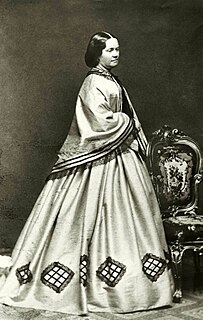 W
WCarin Sophie Adlersparre née Leijonhufvud was one of the pioneers of the 19th-century women's rights movement in Sweden. She was the founder and editor of the first women's magazine in Scandinavia, Home Review, in 1859-85; co-founder of Friends of Handicraft in 1874-87; founder of the Fredrika Bremer Association (Fredrika-Bremer-förbundet) in 1884; and one of the first two women to be a member of a state committee in Sweden in 1885. She is also known under the pen-name Esselde.
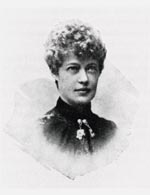 W
WAlma Mathilda Åkermark was a Swedish editor, feminist, writer, journalist and women's rights activist. She was a co-founder of the radical feminist women's paper Framåt ('Forward'), and its editor during its entire publication. She wrote under the pseudonym Mark. She was active within the Gothenburg's Women's Association, and a leading figure within the most progressive and radical part of the Swedish and local women's rights movement, and was noted for her involvement in the Sedlighetsdebatten.
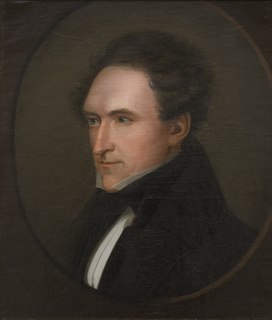 W
WCarl Jonas Love Ludvig Almqvist was a Swedish author, romantic poet, realist, composer and social critic.
 W
WGustafva Björklund (1794–1862) was a Swedish cookery book-author and restaurant owner.
 W
WElsa Borg was a Swedish educator and social worker. She is known for being the founder of the Christian Bible Home for women and its combined mission work and social work among the poor in Stockholm.
 W
WAgnes Margareta Matilda Branting (1862–1930) was a Swedish textile artist and writer. As director of the Friends of Handicraft association from 1891, she undertook developments in large woven tapestries with several prominent artists which led to Sweden's freestyle woven visual art. In 1904, she established the Licium workshop which produced religious and heraldic fabrics including flags and banners. She was also active in the preservation of textiles, establishing the Pietas society for this purpose. As a writer, she contributed articles on arts and crafts to Svenska Dagbladet and published books on textiles.
 W
WAnna Matilda Charlotta Branting, was a Swedish journalist and writer. She was a Social Democrat and married to Swedish prime minister Hjalmar Branting. From the 1880s to 1917, she was an influential theater critic in the Stockholm press under the pseudonym Réne.
 W
WFredrika Bremer was a Swedish writer and feminist reformer. Her Sketches of Everyday Life were wildly popular in Britain and the United States during the 1840s and 1850s and she is regarded as the Swedish Jane Austen, bringing the realist novel to prominence in Swedish literature. In her late 30s, she successfully petitioned King Charles XIV for emancipation from her brother's wardship; in her 50s, her novel Hertha prompted a social movement that granted all unmarried Swedish women legal majority at the age of 25 and established Högre Lärarinneseminariet, Sweden's first female tertiary school. It also inspired Sophie Adlersparre to begin publishing the Home Review, Sweden's first women's magazine. In 1884, she became the namesake of the Fredrika Bremer Association, the first women's rights organization in Sweden.
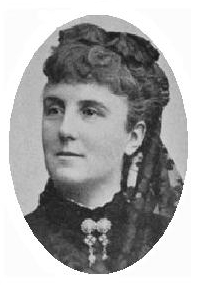 W
WCalla Curman, née Lundström (1850–1935), was a Swedish writer, salon-holder and feminist. She was the founder of Stångehuvud nature reserve (1925), ladies' club Nya Idun (1885), which was the female equivalent of the all-male cultural club Sällskapet Idun, and a board member of a number of societies, notably Friends of Handicraft in 1880–1904, and the Swedish Dress Reform Society. During the 1880s and 1890s, she hosted De Curmanska mottagningarna, a well-known literary salon.
 W
WChristina Charlotta Cederström née Mörner af Morlanda was a Swedish dilettante artist, salon hostess, and baroness. She was an honorary member of the Royal Swedish Academy of Arts, as well as an honorary member of the French Académie des Beaux-Arts
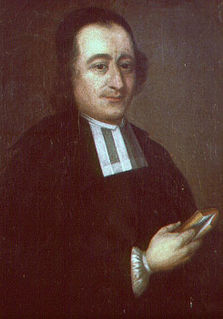 W
WAnders Chydenius was a Finnish priest and a member of the Swedish Riksdag, and is known as the leading classical liberal of Nordic history.
 W
WMagnus Jacob Crusenstolpe (1795–1865), Swedish historian; he became famous both as a political and a historical writer early in his career.
 W
WFredrik August Dahlgren was a Swedish writer, playwright and songwriter.
 W
WFritz Ludvig von Dardel was a Swedish diarist, illustrator and early comics artist. He was a courtier, and is known for his diary and illustrations depicting the life of the Swedish court in the mid 19th century.
 W
WAnna Fredrica Ehrenborg, née Carlqvist, was a Swedish writer. She was regarded as one of the most notable supporters of The New Church in contemporary Sweden.
 W
WMariana "Marianne" Maximiliana Christiana Carolina Lovisa Ehrenström, née Pollet, was a Swedish writer, singer, painter, pianist, culture personality, memoir writer and lady-in-waiting. She was a member of the Academy of the Free Arts and an honorary member of the Royal Swedish Academy of Music.
 W
WNils Johan Ekdahl was a Swedish theologian, political writer and cultural historian.
 W
WSophie Elkan née Salomon, was a Swedish-Jewish writer and translator. A street in Gothenburg, Sophie Elkans gata, is named after her.
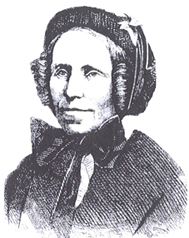 W
WMathilda Foy, , was a Swedish philanthropist and writer, known for her charitable work. She is known as a pioneer of the Sunday school, and as the co-founder of the charity organisation, Fruntimmersällskapet för fångars förbättring in 1854.
 W
WFrans Michael Franzén was a Swedish-Finnish poet and clergyman. He served as the Bishop of the Diocese of Härnösand.
 W
WEllen Fries was a Swedish feminist and writer. She became the first female Ph.D. in Sweden in 1883.
 W
WWilhelmina Carolina Gravallius, née Isaksson, was a Swedish writer.
 W
WAurore von Haxthausen, known also by her artist pseudonym as Klara Kuhlman, was a Swedish author, composer, pianist and lady in waiting.
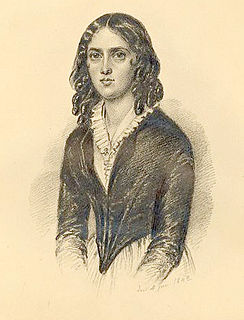 W
WWendela Hebbe née Åström, was a Swedish journalist, writer, and salon hostess. She was arguably the first permanently employed female journalist at a Swedish newspaper. She had a significant place in the radical literary circles of mid 19th-century Sweden and a controversial role model for the emancipated woman.
 W
WAnna Amalia von Helvig was a German and Swedish artist, writer, translator, socialite, Salonist and culture personality. She is known as an inspiration for many artists. She was a member of the Royal Swedish Academy of Arts.
 W
WHedwig Elisabeth Charlotte of Holstein-Gottorp was Queen of Sweden and Norway as the consort of King Charles XIII and II. She was also a famed diarist, memoirist and wit. She is known by her full pen name (above), though her official name as queen was Charlotte (Charlotta).
 W
WHilda Augusta Amanda Kerfstedt, née Hallström, was a Swedish novelist, playwright and translator. She was a popular and noted writer in late 19th and early 20th century Sweden, and participated in the public debate. She was also engaged in the movement for women's rights, and active in the Fredrika Bremer Association and Married Woman's Property Rights Association. As a feminist, she focused on the debate around sexual equality, and was critical to the contemporary sexual double standards for men and women. As such, she was one of the participants in the Nordic sexual morality debate, the public debate in Swedish papers, books and plays, which took place during the 1880s. She was the editor of the feminist paper Dagny, the publication of the Fredrika Bremer Association, in 1888-1891. She was especially noted within the debate on children's literature.
 W
WEllen Karolina Sofia Key was a Swedish difference feminist writer on many subjects in the fields of family life, ethics and education and was an important figure in the Modern Breakthrough movement. She was an early advocate of a child-centered approach to education and parenting, and was also a suffragist.
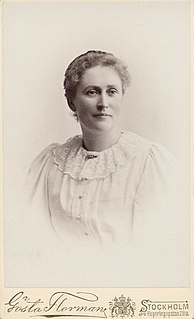 W
WAne Gurli Linder née Peterson (1865–1947) was a Swedish writer and feminist who was active in Stockholm's social life in the late 19th century when she also encouraged women to become more directly involved in culture. A strong supporter of libraries and reading, she later played an important role in pioneering the promotion and development of children's literature.
 W
WJonas Carl Linnerhielm was a Swedish nobleman, State Herald of Sweden, artist and writer. He is arguably most well known for his accounts of his travels within Sweden, which he illustrated himself and published in three volumes between 1797 and 1816.
 W
WAurora Lovisa Ljungstedt née Hjort, pseudonym Claude Gérard, was a Swedish writer. She is regarded to be the first crime novel author of her country and has been referred to as Sweden's Edgar Allan Poe.
 W
WOscar Ljungström (1868–1943) was a Swedish archivist, officer, and author.
 W
WHulda Lundin was a Swedish tailor and educator who laid the foundation for modern sewing education. She was the founder of the so-called “Swedish public school system of manual training”, and served as Inspectress of Girls' Sloyd in the public schools of Stockholm. The government of Sweden granted Lundin a stipend to the World's Columbian Exposition in Chicago, the only woman thus chosen.
 W
WIngrid Mathilda Kruse Malling, known as Mathilda Malling, and even better known by her early nom de plume, Stella Kleve, was a Swedish novelist born January 20, 1864, on her family's farm, in North Mellby Parish, Kristianstad County, Sweden and died in København, Esajas sn, Sjælland, Copenhagen in 1942. Daughter of Danish estate owner, Frans Oskar Kruse, and Anna Maria Mathilda Borgström, she graduated from Lyceum for Girls in Stockholm, then studied at Lund University, in Switzerland, in 1884, and in Copenhagen, 1885-1886. In 1883 and was married in 1890 to merchant Peter Malling in Copenhagen.
 W
WEmily Nonnen was a British-Swedish writer, translator and artist.
 W
WJulia Kristina Nyberg, was a Swedish poet and songwriter. She published two collections of poetry and was awarded by the Swedish Academy. She wrote the vast majority of her works under the pseudonym Euphrosyne.
 W
WHelena Nyblom was a Danish-born Swedish children's story author. She is perhaps most remembered for The Swan Suit. She died in Stockholm.
 W
WRosalie Ulrika Olivecrona, née Roos, was a Swedish feminist activist and writer. She is one of the three great pioneers of the organized women's rights movement in Sweden, alongside Fredrika Bremer and Sophie Adlersparre.
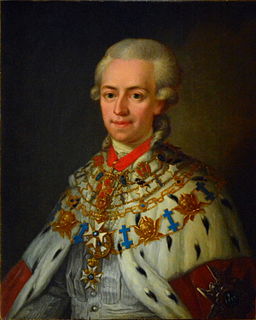 W
WCount Johan Gabriel Oxenstierna is considered one of the foremost Swedish poets of the Gustavian period. A prominent courtier during the reign of King Gustav III of Sweden, he was also a politician, diplomat and member of the Swedish Academy, holding seat number 8. On several occasions he was a member of the Swedish Government and Parliament. Amongst other things, Oxenstierna is also known for his translation into Swedish of John Milton's epic blank verse poem Paradise Lost.
 W
WRagnhild Thorborg Rappe, was a Swedish pedagogue and Baroness. Alongside Emanuella Carlbeck, she is counted as a pioneer in the education of students with Intellectual disability in Sweden.
 W
WMärta Helena Reenstierna, also von Schnell, known as Årstafrun, was a Swedish diary writer. Her diaries were written in the period 1793–1839, and are kept at the archives of Nordiska museet in Stockholm. They were published in 1946–1953 as Årstadagboken. They are considered as a valuable cultural historical document of the everyday life of the people at a Swedish manor of her epoch.
 W
WEmilie Charlotta Risberg was a Swedish writer and reform pedagogue. She founded the Risbergska skolan in Örebro, and served as its principal in 1863-1878. Emilie Risberg is regarded as an important member of the pioneers of girl's education in the mid 19th century Sweden, who reformed the education of girls by establishing girls' schools which offered proper academic education for females, in contrast to the earlier girl's pensions shallow education.
 W
WChristina Gustava Lovisa Rogberg was a Swedish author and courtier.
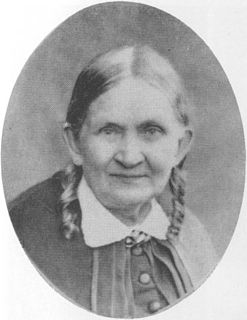 W
WFredrika Charlotta Runeberg, born Fredrika Tengström, was a Finnish (Finland-Swedish) novelist, journalist and the wife of Finland's national poet Johan Ludvig Runeberg. She was a pioneer of Finnish historical fiction and one of the first woman journalists in Finland.
 W
WLina Sandell was a Swedish poet and author of gospel hymns.
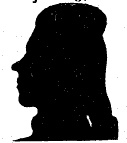 W
WNils Lorens Sjöberg was a Swedish officer and poet. He was the first holder of seat 18 at the Swedish Academy, from 1787 to 1822.
 W
WCarolina Wilhelmina Stålberg was a Swedish writer, poet, translator, and lyricist. She worked under the pseudonym "Wilhelmina".
 W
WElisabet Kristina Hilma Angered Strandberg, was a Swedish writer. She mostly wrote under the name Hilma Strandberg of the pseudonym Lilian.
 W
WIsrael af Ström was a Swedish botanist and forestry researcher. He introduced systematic forest management in Sweden and initiated the founding the Swedish National Forest Institute.
 W
WHelena Charlotta Westermarck was a Swedish-speaking Finnish artist and writer.
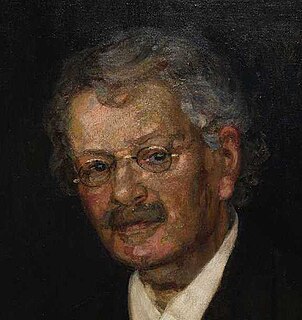 W
WJohan Gustaf Knut Wicksell was a leading Swedish economist of the Stockholm school. His economic contributions would influence both the Keynesian and Austrian schools of economic thought. He was married to the noted feminist Anna Bugge.
 W
WHenriette Sophie Widerberg was a Swedish opera singer (soprano) and memoirist. She was an elite member of the Royal Swedish Opera and its perhaps most noted singer and prima donna of her time. She was also active as a courtesan and noted for her love life. She was appointed Hovsångare in 1837.